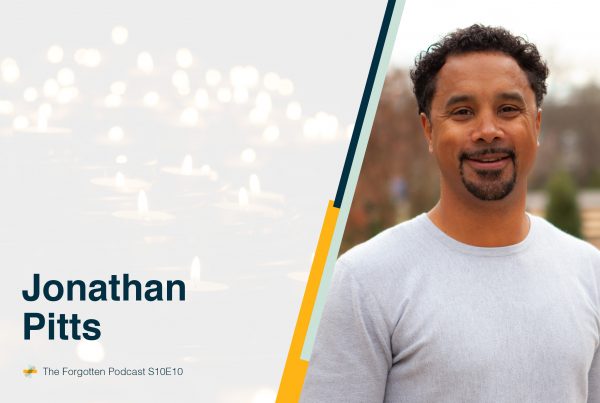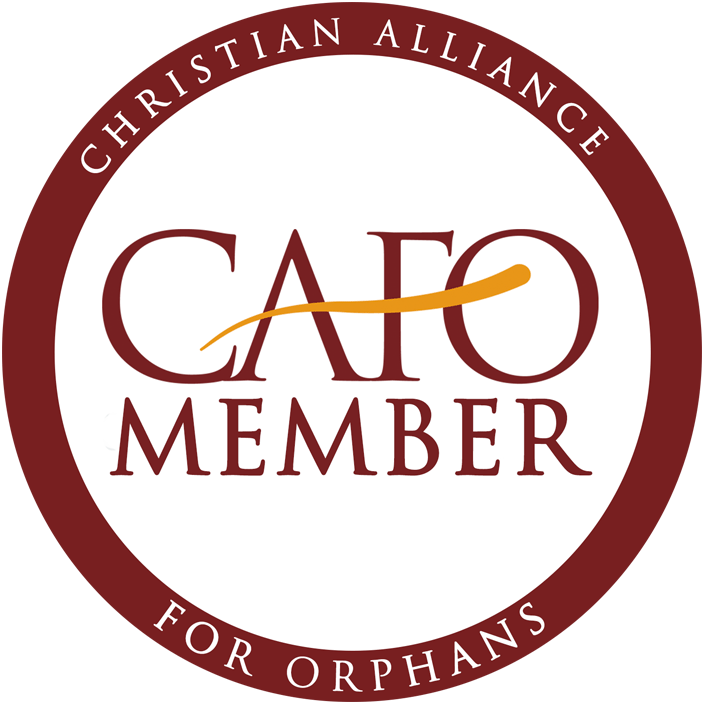
"The overwhelming number of souls who are being trafficked in our borders, by our citizens, are our own children, and most are coming from foster care."
Ashleigh Chapman is a preacher’s kid who found her life’s calling at the age of 11. Her parents worked at a homeless mission when a woman and her three children arrived, begging for safety from an abuser. Her parents quickly realized the woman was also an abuser and worked diligently to keep the three children safe. She became devoted to the cause of protecting the vulnerable. She focuses full-time on fighting the heinous crime of human trafficking in the US and around the world. Don’t miss this episode—it’s critical to the future of our children and our communities!
Ashleigh defines human trafficking as modern-day slavery that has three primary purposes for commercial exploitation: labor, sex and organs. Human trafficking is prevalent across the globe, including the United States. It is estimated that human trafficking is a $150 billion per year industry, out-earning Apple, Microsoft and other similar companies combined.
Although human trafficking is not a new evil, it was recognized throughout the world as a pervasive and insidious issue starting about 2000-2001; it’s only been since about 2008 since it’s been acknowledged as a problem in the US as well.
Shockingly, there are more slaves today worldwide than ever before—including the Dark Ages and the pre-Civil War era in the United States. More than 40 million foreign nationals, “souls,” are trafficked annually.
Lest we in the US think it only happens “over there,” the shocking statistics regarding trafficking here are sobering: “The overwhelming number of souls who are being trafficked in our borders, by our citizens, in our states, are our own children, most of them coming from foster care,” says Ashleigh. That’s 100,000-300,000 little souls who are being bought and sold in just about every community in our nation.
Additionally, it’s not just limited to big cities. Ashleigh recently worked with a community of 50 people in which a child had been lured by an adult trafficker on Facebook.
Who is vulnerable?
With the rise of the Internet, issues like pornography have lead to baser obsessions like child pornography, and perpetrators have found opportunities to act upon these impulses. At large events, like the Super Bowl, it’s very easy to pull up a search on the Internet and find out exactly how much it would cost to have sex with a man, woman or child of any age or race. The Internet makes it very easy to exploit those caught in the web.
One study revealed that three common vulnerabilities for children caught up in trafficking include fatherlessness (complete lack of a father figure in their life), self-reported abuse in their own home, and being in foster care.
Most of the children who are trafficked in the US come from the foster care system—these are the kids who have had a variety of difficulties in their lives. A composite of a typical trafficked child may have been in as many as 10 different foster homes, two juvenile centers, a regular hospital, and a psychiatric hospital.
With all these compounding vulnerabilities, the child is easy prey for someone who befriends them and offers to “take care of” them. Sadly, these children don’t know what they are entering into and it quickly becomes a nightmare situation.
Traffickers know who to look for—kids at the mall or in bus or train stations who don’t seem to have anyone else. They pretend to be someone who will love them and may even treat them well for a period of time.
The perpetrators are people who coerce, force or fraudulently trick a minor by any means. Any child who is sold for sex is a victim of child sex trafficking—there is no such thing as “child prostitution.” Traffickers control that person and all the money exchanged in the transaction.
Finding and arresting the traffickers solves only part of the problem, however. The buyers of the individuals—those who are “purchasing”—are another factor. It’s estimated that, on average, each child is sold to 10-20 (predominantly) men each night. Finding and stopping the buyers is another huge issue.
In the US, we have been fighting trafficking for less than a decade, therefore “we have so much work to do so that children in vulnerable situations don’t become prey for traffickers,” says Ashleigh.
How do kids get recruited?
While there are certainly those who are abducted or runaway from abusive situations, a frighteningly large number of children get caught up in trafficking through the Internet. They are desperate to get recognition, so they put themselves and information about their lives (inadvertently, usually) on Facebook, Snapchat, Instagram or other social media platforms. A trafficker will pose as a peer, someone their age, maybe from their high school who they haven’t met, and starts a relationship online.
Then the trafficker invites them to meet, or go to a party, where they might be drugged and gang raped, all of it videoed and documented with pictures that are then used to blackmail the child. The trafficker will threaten to expose them with the pictures if they don’t sneak out and sell themselves. Unfortunately, this can happen while the child is living in their own home (or foster home).
“Our kids don’t know there are unsafe people in the world,” says Ashleigh. “We need to empower and equip them to not engage in unsafe relationships with strangers.” It’s important to make strangers earn their trust before they are considered safe.
Once the child does what the trafficker demands, it quickly becomes something that feels as if there is no way out.
Another way young girls get trapped can be seen in Rachel Thomas’s story. Rachel came from a good home and was attending college when a man walked up to her and told her she was beautiful and could easily be a model. It seemed a legitimate business for the first several months, but one night she was asked to escort a man. At first, she refused, but he then showed her a picture of her own home and threatened to shoot the person who opened the door. She was caught in this web for 18 months until this man was arrested.
What should we look for?
How do we know if someone is being trafficked? Ashleigh gives these red flags to watch for:
- The person has no control of what they are saying, or what they have.
- The person is withdrawn; someone is answering for them.
- The person does not control their own papers (identification cards, etc.).
- The person is emaciated or bruised.
- The person seems to get showered with expensive gifts (a cycle of viciousness then gifts).
- The person has an older “boyfriend.”
If even remotely suspicious about the possibility of trafficking, do not hesitate to call, Ashleigh urges. “Your call might be the final piece of the puzzle for law enforcement to move.” Call both the National Human Trafficking Hotline (1-888-373-7888 or text Info or Help to BeFree 233733) and local law enforcement.
How do we make a way out?
A frightening statistic that demands we ramp up the fight against human trafficking is the average life expectancy for trafficked people: less than seven years can someone withstand the abuse and mental, physical and emotional toll being trafficked can take.
Although the information and statistics about human trafficking are very dark, there is hope.
“Absolutely, there is hope,” insists Ashleigh. “Trafficking exists because we have allowed it to exist. That means we can stop it. Each of us is uniquely positioned to step into this fight.”
One way Healing Place Church, which created a non-profit called HPServe, in Baton Rouge, Louisiana, has fought back is to intercede before the traffickers get to the children. Because Baton Rouge is a popular destination for runaways, the church found out that the traffickers would get to the runaways within 48 hours of their arrival in the city. The church decided that they would, therefore, get to the kids within 24 hours—they would intercede and help kids get the services and care they need.
Ashleigh stresses the importance of communities working together to make a difference. She shares one example in which a community had passed a law that children could not be arrested for prostitution, but it hadn’t been blended with other laws to enable law enforcement to be able to remove children from these situations and take them to CFS facilities. The police literally couldn’t pick up the children if they hadn’t committed a crime.
Enter the nuns. A group of nuns volunteered to provide transportation if law enforcement officials would simply call them. They rescued more than 120 individuals.
Because each community has its unique set of variables to manage, Ashleigh suggests completing a community assessment before acting. “It’s important to know who is suffering in your community and why,” she explains, citing one community that spent time and money focusing on the wrong population. She urges you to support stronger laws about perpetrators and buyers. Look at the bigger picture to create solutions that make sense, and be strategic.
“We all have a part to play, and there is enormous opportunity to step in and work together as a community,” she says. “The Enemy is preying upon the most vulnerable; that should enrage us. We need to better than the traffickers at what we do.”
RESOURCES FROM TODAY’S SHOW
engagetogether.com
Engage Together Blog
Rachel Thomas – Sowers Education Group
Human Trafficking Hotline 1-888-373-7888 or text Info or Help to BeFree (233733)
The TFI Story
Who Loves Series
Find a TFI Advocate Near You
Become a TFI Advocate
Hopefully, this episode has helped you right where you are on your foster care journey. That’s the goal. If you enjoyed it, will you tell others?
The best way to do that is to rate the podcast on Apple Podcasts and leave us a brief review! Your ratings and reviews help us get this podcast in front of new listeners. Your feedback also lets us know how we can better serve you. Thank you so much!

Meet Our Guest
Ashleigh serves as the President/CEO of the Alliance for Freedom, Restoration, and Justice® (AFRJ), which exists to end human trafficking and protect the vulnerable. The AFRJ’s primary campaign, the Engage Together® initiative, serves as a hub for strategic partnership engagement for thousands of justice advocates around the world.
Prior to founding the AFRJ, Ashleigh served as the co-founder and Director of the Center for Global Justice, Human Rights, and the Rule of Law at Regent University School of Law; the Director of a non-profit organization serving thousands of disadvantaged and at-risk children and youth in Tennessee; a Children’s Pastor; and a Court Appointed Special Advocate for children in foster care.
A licensed attorney in the state of Virginia, Ashleigh and her husband, Sloan, reside in Tennessee.
Get practical episodes and updates in your inbox.
Be the first to know about new episodes, posts, resources, and stay in the loop about what’s coming up.
Other Episodes You Might Enjoy:









